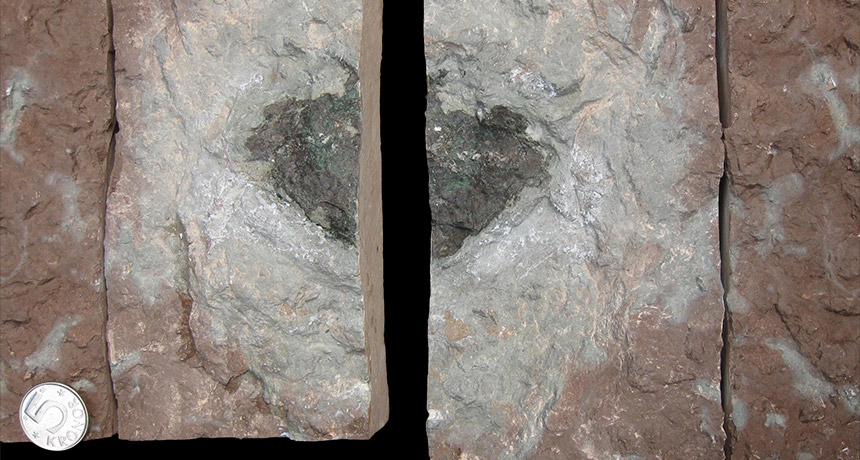Long-lost ‘extinct’ meteorite found
Unusual space rock fragment may have come from 470-million-year-old cosmic collision

ROCKY REMAINDERS A new meteorite (dark area, center) discovered embedded inside red limestone may have formed during the same space crash that formed L chondrites, one of the most abundant meteorite groups on Earth.
Birger Schmitz







